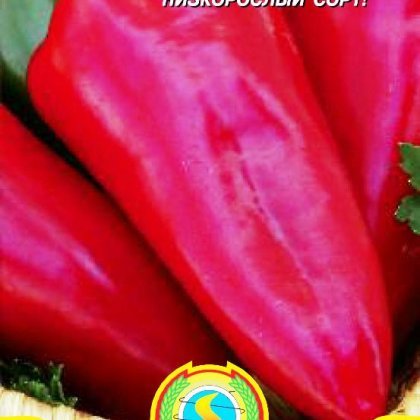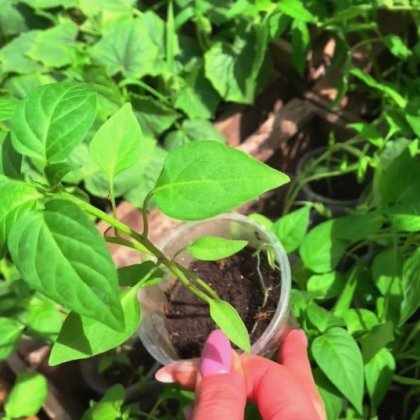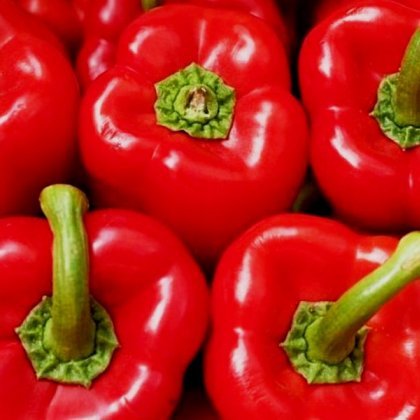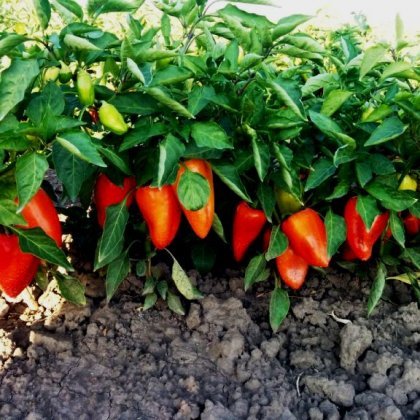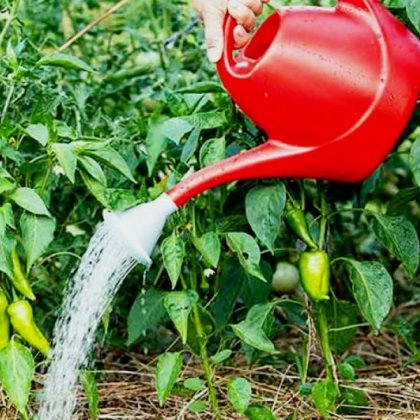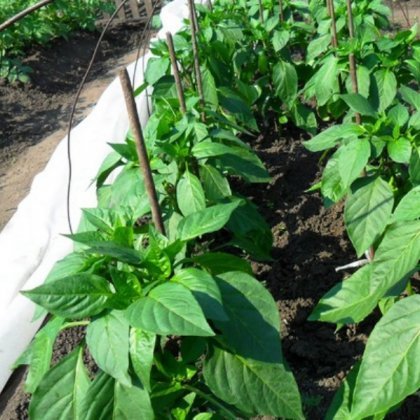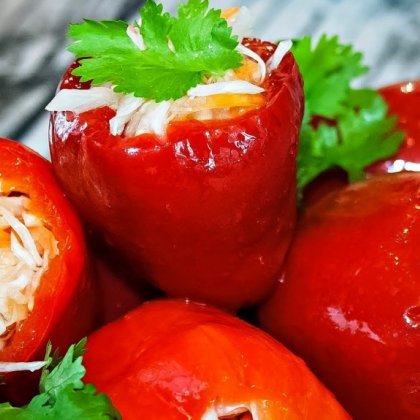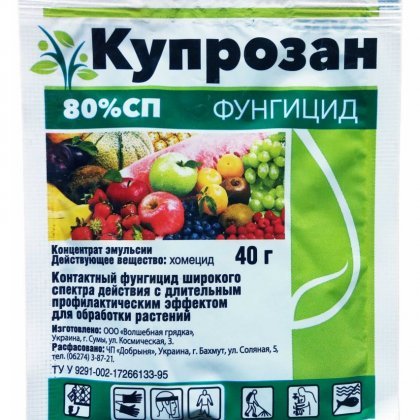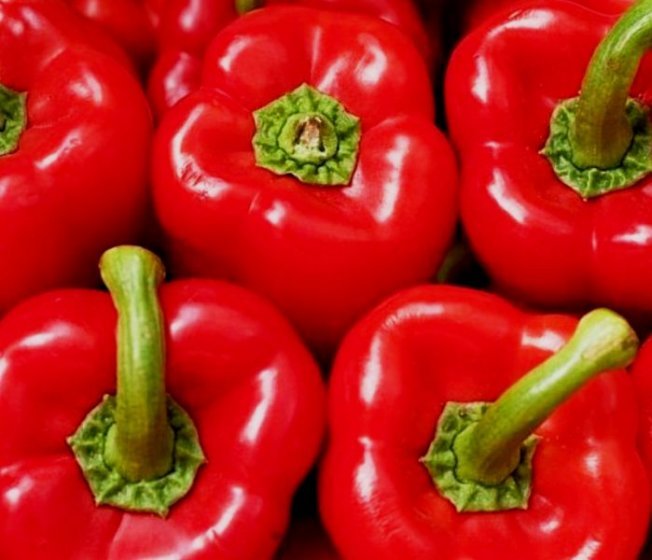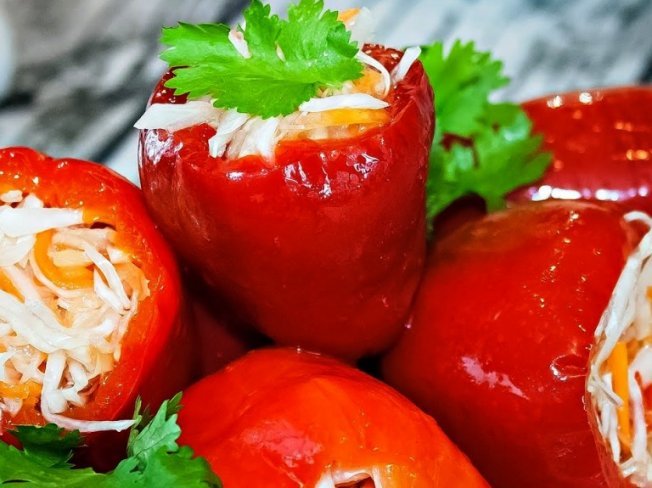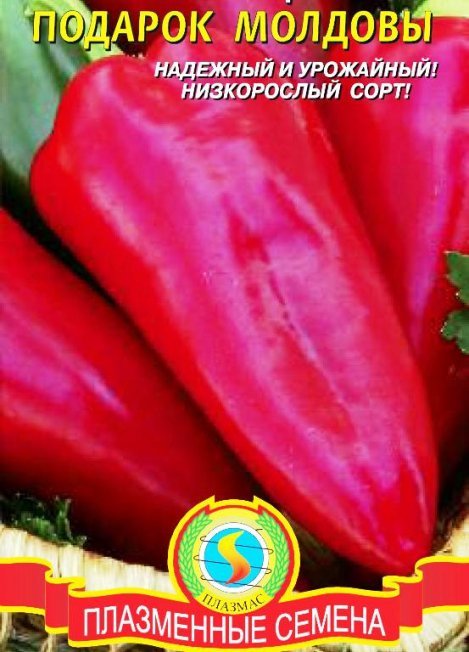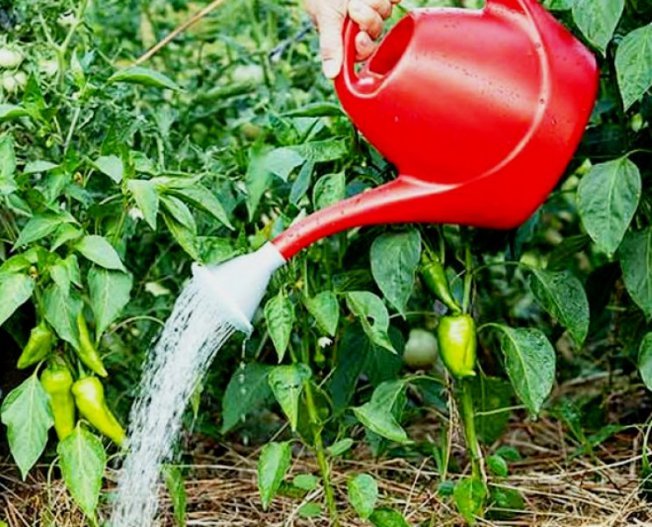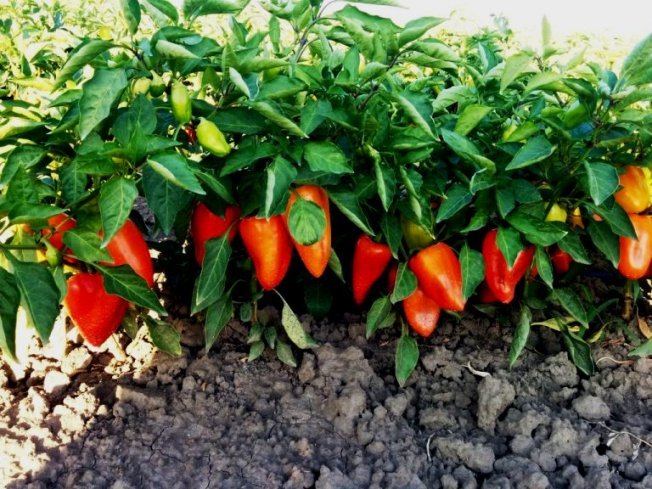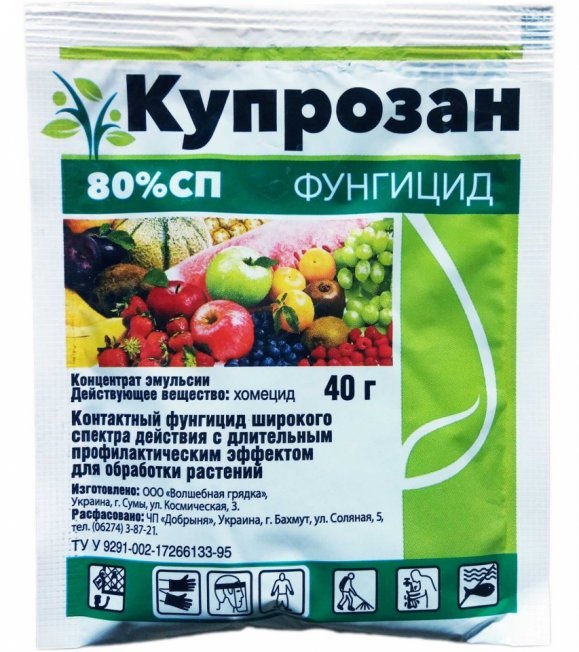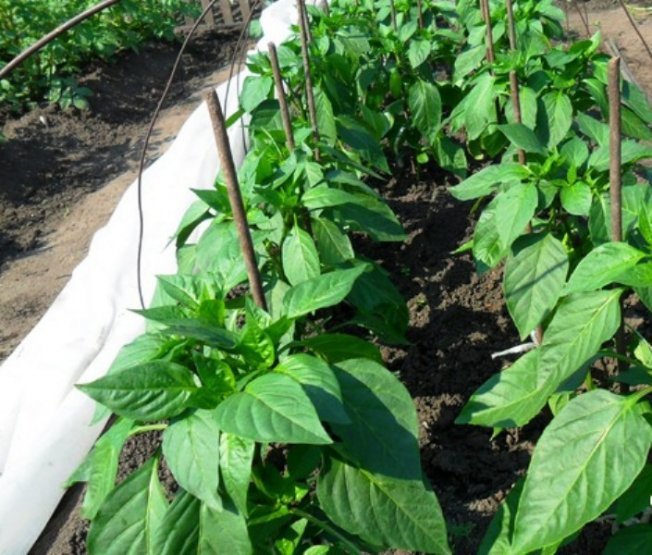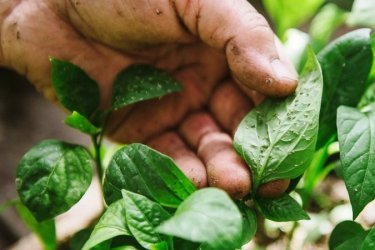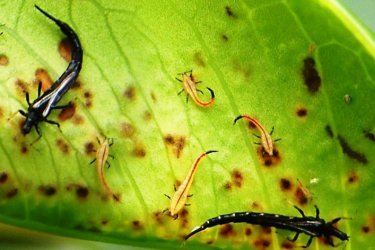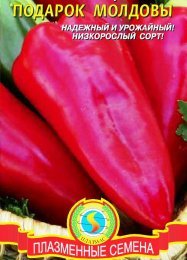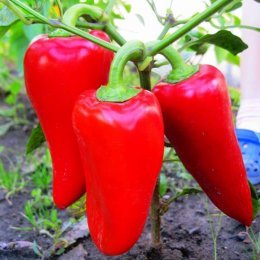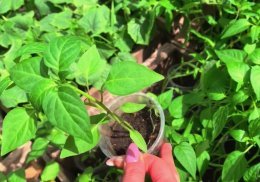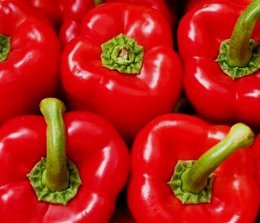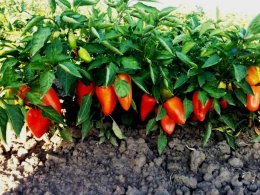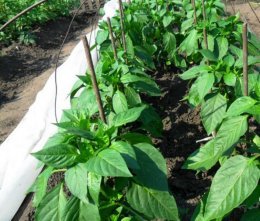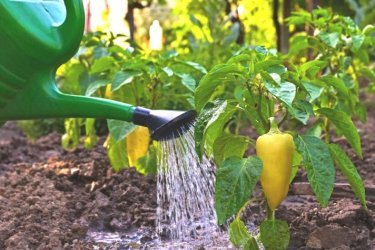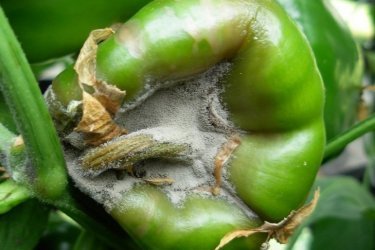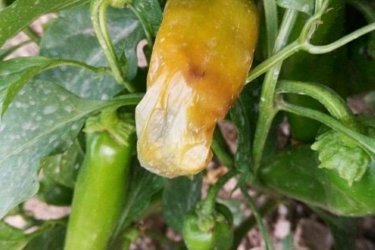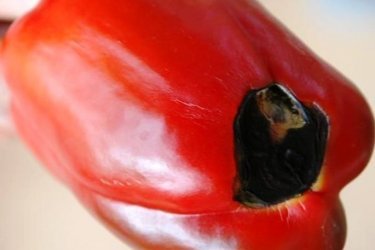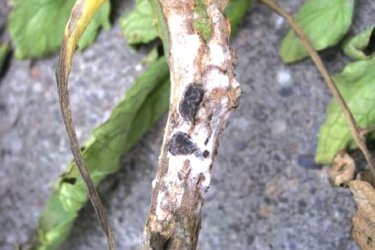Gift of Moldova - a productive pepper variety with innate immunity to diseases
Gift from Moldova
Podarok Moldovy
dulcis piperis
Mid-early

A gift from Moldova - a variety of pepper that has long been known, deservedly popular among summer residents; its description, photos and reviews about it make you want to grow just such a beautiful and tasty vegetable on your plot.
History of appearance
The variety was developed in 1973 at the Moldavian Research Institute of Irrigated Agriculture and Vegetable Growing. The starting material for creating the variety was the hybrid Line 115/60 and the White Capia variety.
Where can I grow
The State Register does not establish restrictions on the regions where the Podarok Moldova variety can be grown; it is grown in any climatic conditions, excluding subarctic ones.
Pepper is suitable for growing in open ground, in greenhouses and greenhouses, on a balcony and even on a well-lit windowsill.
Description and characteristics of the variety
The plant is of medium height, compact, strong, and does not require staking. The crown width is within 40 cm. The root system is well developed. The leaves of the plants are small and there are not very many of them on the stems.
Since the internodes are short, a large number of fruits are set. Their disposition is low, they do not interfere with each other.
Description of fruits
Peppers of the Podarok Moldova variety have a beautiful cone-shaped shape. In the state of technical maturity, the color of the fruit is dark green; as it ripens, it changes to brown; in the state of biological maturity, it changes to dark scarlet.
The fruits are thick-walled, juicy, with a pronounced aroma, their length can reach 12 cm, weight - 110 g. They can be eaten when fully ripe and in a state of technical maturity.
Fruiting of the bushes lasts about a month, the harvest is harvested in 4-5 passes.
What are the advantages of the variety
Only numerous advantages allow the Podarok Moldova pepper to adequately withstand competition from varieties and hybrids that systematically appear on the market.
The advantages of the variety are:
- ease of care;
- undemanding to climatic conditions;
- compactness of plants, possibility of denser planting;
- no need for gartering, bush formation, or removal of stepsons;
- innate immunity to common pepper diseases, genetic resistance to fusarium and verticillium;
- good seed germination;
- the ability to collect seeds yourself, because the Gift of Moldova is not a hybrid;
- excellent presentation, keeping quality, good safety during transportation.
Let's watch an interesting video about the pepper variety Gift of Moldova:
Are there any disadvantages
In reviews of Podarok Moldova pepper, there are practically no mentions of shortcomings.
If we take into account the general ones that are characteristic of all varieties, then we can indicate that for high plant yields you will need:
- planting in a well-lit area;
- systematic watering;
- in greenhouse conditions - maintaining air humidity and stable temperature.
Application area
The taste of pepper can be called excellent; it has a sweetish taste and a light aroma.
The purpose of the fruits is universal; they can be used:
- raw for making salads;
- for stuffing and preparing first courses;
- for homemade preparations, ketchups, lecho, adjika.
Peppers can be preserved whole, because... when exposed to high temperatures, it does not lose color or shape. It can also be frozen whole and dried.
How to grow seedlings
The climatic conditions of most of Russia suggest a seedling method of growing pepper. Only in the South can seeds be sown directly into the ground.
The timing of sowing seeds should be calculated taking into account the fact that peppers germinate slowly; in order to obtain full-fledged seedlings it will take at least 100 days, i.e. Sowing pepper can begin in mid-February.
For seedlings, it is better to use individual containers, this will avoid diving.
To disinfect seeds, you can use a solution of potassium permanganate; biostimulants Epin or Zircon will help speed up germination. Pre-soaking the seeds increases the germination rate.
There are no special requirements for the soil; you can use the one that is intended for growing nightshade crops, or a universal one, with the addition of humus and river sand. When preparing the soil, you can add a little wood ash or crushed chalk to it.
Containers for pepper seedlings are not deep. The seeds are not spread out densely; about 4-5 cm should be left between the rows; in the rows, the seeds are placed at a distance of 2 cm.
For active seed germination, you will need to place the containers with the crops in a greenhouse, the optimal temperature is +25 + 28 C. To retain moisture, cover the container with glass or film and ventilate it daily for half an hour.
After the emergence of seedlings, the seedlings are grown at a temperature not lower than + 16 C, the duration of daylight hours should not be less than 12 hours. If necessary, additional lighting is applied. The soil is kept in a state of moderate moisture, otherwise there will be a threat of fungal diseases, in particular blackleg.
Watering and sprinkling are carried out with warm, settled water. Seedlings are fertilized twice; you can use Nitrophoska or Azofoska.
A week and a half before planting in the ground, the seedlings begin to harden, while care must be taken to ensure that the plants are not exposed to direct rays of the sun.
Peppers are planted when they reach a height of 18-20 cm, when they have 8-10 true leaves. The presence of flowers on a plant is not an obstacle to planting.
Let's watch a useful video about that. how to grow high-quality pepper seedlings:
Landing in the ground
Plants can be planted in the ground at the end of May-beginning of June, when the threat of frost has disappeared and the soil in the beds has warmed up to + 15 C.
Choose a place for the garden bed that is well lit by the sun, preferably protected on the north side. Peppers should not be planted in lowlands where there is a risk of rainwater accumulation. You should also avoid planting seedlings on heavy clay soils with high acidity.
Seedlings should not be planted near other nightshade plants. The best predecessors of pepper are carrots, cabbage, zucchini, and radishes. You should not place beds with sweet and bitter varieties next to each other; the crops may be cross-pollinated, and as a result, the sweet variety may acquire unwanted bitterness.
When planting, plants are placed according to a pattern of 40x50 cm (or 25x60 with the wide-row method) per 1 sq.m. you can plant 5-6 bushes.
Before planting, you can add a handful of humus into the holes. After planting, the pepper is watered generously with settled warm water.
Rules of care
The beds on which peppers are planted should be weeded once every two weeks and loosened after each watering. The option of using mulch will allow you to avoid systematic loosening of the soil.
Growing peppers in greenhouses will require the organization of high-quality ventilation, because... stale, too humid air will promote the development of pathogens.
Agronomists do not recommend picking off some of the leaves after the ovaries appear, but ripening fruits should be removed in a timely manner, this will extend the fruiting period.
The Gift of Moldova variety is not self-pollinating, so it is recommended to spray it with diluted sugar syrup during flowering.
Pepper is a moisture-loving plant; it is watered as the soil dries, preferably in the evening. Use settled, warm water.
Approximately 10-12 days before harvesting, watering is stopped, otherwise the fruits will be too watery and their taste will not be high.
Feeding
Since the yield of the variety is high, the plants will definitely need fertilizing, but moderate fertilizing; excess fertilizer will only do harm.
During the feeding season there should be 3:
- First - 15-18 days after planting in the ground, fertilizers should contain nitrogen. This can be urea (urea) or ammonium sulfate; 10-15 g of it will be needed per 10 liters of water. A solution of fresh cow manure and an infusion of nettle leaves are also used. Fertilizers are applied in liquid form, 1 liter per bush, after abundant watering.
- The second - 20 days after the first. Use a solution of potassium sulfate or simple superphosphate (15-20 g per 10 liters of water). You can add complex products: Kemira-Lux, Agricola. Among natural remedies, we can recommend an infusion of ash.
- The third is produced during the period of fruit ripening; fertilizers containing potassium and phosphorus are used.
Diseases
Despite the variety’s resistance to a number of diseases, if growing conditions are not met, plants can be damaged by fungi that cause putrefactive processes.
If the disease is noticed in a timely manner, treatment with fungicides will help get rid of it:
- Cuprosan;
- Horus;
- Topaz;
- Coming soon:
- other drugs containing copper.
It is recommended to spray the bushes and the soil around them. You can add a small amount of potassium permanganate to the water for irrigation.
Pests
Aphids can cause significant damage to pepper bushes: their numerous colonies feed on the sap of young leaves and shoots, the affected parts of the plant wither, dry out, and lose leaves.
For prevention purposes, it is recommended to spray pepper with infusions:
- tobacco crumbs;
- orange peel;
- garlic and onions;
- wormwood;
- marigolds.
These remedies will help if there are not very many pests. In case of significant damage, Aktara and Actellik, Confidor, Intavir are used. Spraying is carried out several times with an interval of 5 days.
An equally serious pest is slugs. If there are few of them, they are collected by hand. Traps that are containers sunk into the ground with sugar syrup, beer, and pieces of cabbage are also effective.
The pepper variety Gift of Moldova is popular among vegetable growers and deservedly so: it has excellent taste, is well transported and preserved, it can be sold on the market and prepared in different ways for the winter.
Pests






